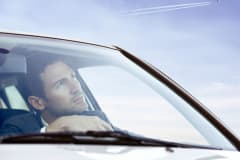As head of the U.S. Department of transportation declared repeatedly his goal distracted driving Ray LaHood, such as while driving talk. A new study adds another to his list of driving No. nos: pets, particularly for senior drivers.
To say, researchers at the University of Alabama at Birmingham that both overall and at fault crash rates for drivers 70 years or older higher which were their pet often rode with them.
"This is the first study to assess the presence of pets in a vehicle as a possible internal distraction for older drivers," said Gerald McGwin, co-author of the study and a professor in the Department of epidemiology.
The crash risk for drivers, who drove with their pets was the double of drivers who never drove with an animal. Crash rates for those who occasionally or rarely drove with pets were tariffs for non-pet owner.
LaHood has good reason, distracted driving be worried: it makes more than 10 percent of all U.S. highway deaths, according to the National Highway Traffic Safety Administration. The Government recently policies around the eyes of the driver, mobile phones, and on the road and discouraging car manufacturers prevent troublesome dashboard devices make.
The guidelines are to limit how long drivers look from the street. After Highway Safety Administration, drivers should their eyes off the road for longer than two seconds do not ingest. A playful pet, especially one on the front seats could require too much attention.
More than half of pet owners said, took their pet with them in the car at least temporarily usually riding in the front seat or the back seat.
"The increased crash rate for older drivers who drive always with pets is important in connection with the awareness of drivers of potentially dangerous driving habits."
The problem with pets in the car not have, that they are likely to physically interfere in the operation of the vehicle, but that they are disturbing. Hawaii is the only State that currently the driver before a pet in driver lap prohibits. Arizona, Connecticut and Maine have broader laws restrict conduct or activities which could potentially distract a driver such laws can apply to pets in a vehicle.
The authors suggest that older drivers slower cognitive performance and response time than younger riders displayed when dealing with "a higher cognitive or physical workload while driving."
"Another disturbing element, especially an active, potentially moving animal, provides more options for an older driver to cope with a condition in a satisfactory way less than add", McGwin said.
In the study, researchers noted, that 83 percent of respondents agreed it was unsafe, pets, to allow travel unrestrained in a vehicle but only 16 percent is trying to use any kind of pet safety restraint in your vehicle.
The study employs 2,000 community living - people who do not live in assisted living or nursing homes - licensed drivers aged 70 and over. There were 691 participants had pets.
Copyright © 2009-2013, the Detroit Bureau










